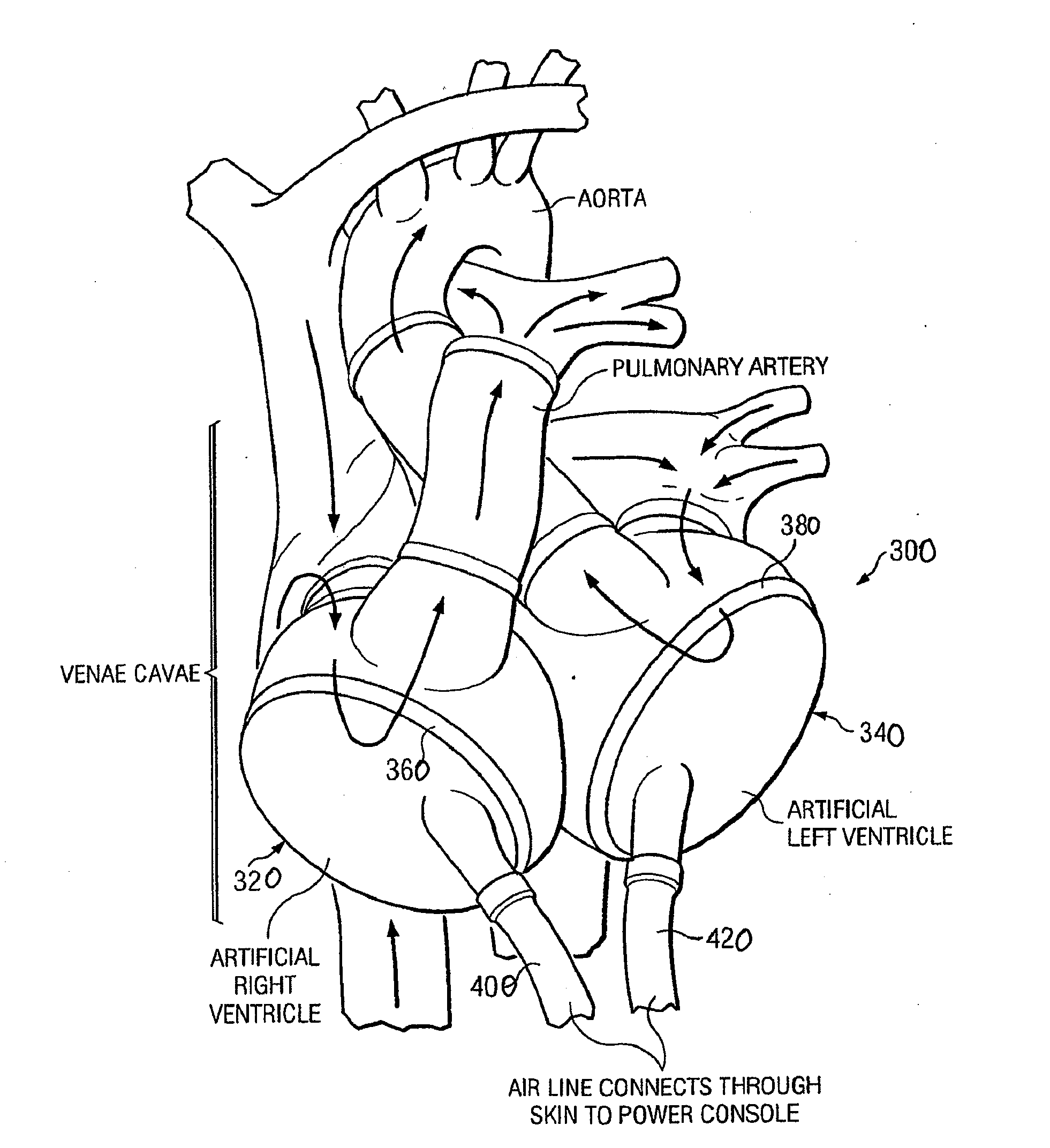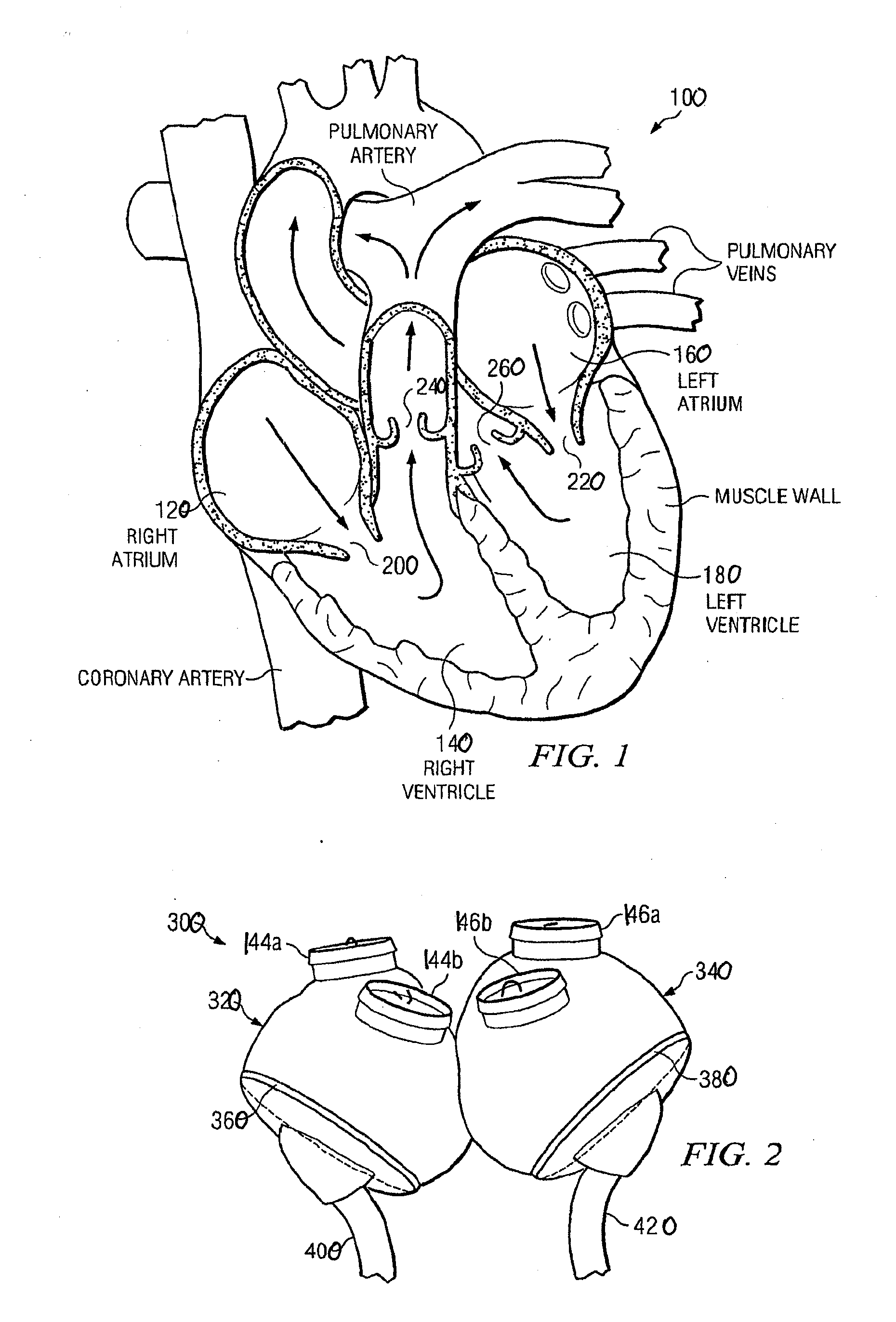Artificial heart
a technology of artificial heart and pneumatic driver, which is applied in the field of artificial heart, can solve the problems of large and heavy apparatus that can only be transported on wheels, inconvenient maintenance, and inability to meet the needs of patients, and achieves the effects of reducing energy consumption, avoiding friction, and avoiding wear and tear of parts
- Summary
- Abstract
- Description
- Claims
- Application Information
AI Technical Summary
Benefits of technology
Problems solved by technology
Method used
Image
Examples
Embodiment Construction
[0044]Disclosed herein is an artificial heart designed to be implanted in the human or other animal body and offers long operating life. The heart requires only occasional external electromagnetic connection exterior to the body to recharge an internal battery also implanted in the body. The use of flat helical non-linear springs in some embodiments provides lateral stability, providing a type of alignment spine to the moving parts of the heart, primarily the heart chambers' inner and outer bellows which are held in place, top and bottom, by the flat circular plates at top and bottom of the artificial heart. These top and bottom plates are also secured to a solid housing, e.g., a cylinder, made of metal in some embodiments, completing the enclosure of the heart. The lateral stability of the moving springs assures freedom from sliding friction between the springs and both sets of bellows. Solenoids with permanent magnetic rod assemblies held by the flat helical springs provide the po...
PUM
 Login to View More
Login to View More Abstract
Description
Claims
Application Information
 Login to View More
Login to View More - R&D
- Intellectual Property
- Life Sciences
- Materials
- Tech Scout
- Unparalleled Data Quality
- Higher Quality Content
- 60% Fewer Hallucinations
Browse by: Latest US Patents, China's latest patents, Technical Efficacy Thesaurus, Application Domain, Technology Topic, Popular Technical Reports.
© 2025 PatSnap. All rights reserved.Legal|Privacy policy|Modern Slavery Act Transparency Statement|Sitemap|About US| Contact US: help@patsnap.com



